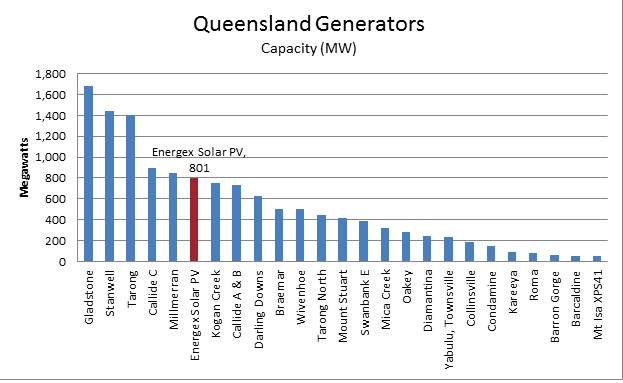The hunger for rooftop solar continues to grow in Queensland, with another 3,250 rooftop solar arrays being officially metered in March, and more than 4,000 new applications received in the same month.
As this graph below shows, the number of applications has rebounded strongly in the last few months, taking the industry – which had expected a continued fall-off in the uptake of rooftop solar as tariffs were unwound – by surprise.
The surge in installations has taken the south-east Queensland region to more than 250,000 homes with rooftop solar – and the total inverter capacity to more than 800MW.
In turn, that makes rooftop solar in the south-east corridor managed by Energex the sixth biggest power station in the state, as this graph below reveals. More than 11 per cent of total residential power consumption in the area is now sourced from embedded generation – namely rooftop solar.
New data from Energex delivers some other interesting insights. One is that the actual amount of money paid out for feed in tariffs is declining.
That’s because around 700 homes changed owners, meaning that their rooftop systems changed from the old 44c/kWh rate to the 8c/kWh rate. That is bringing the average feed in tariff down to 37.5c/kWh.
Almost one in five solar PV systems in the state are now on the 8c/kWh tariff. From July 1, new installations are not guaranteed any tariff – they will have to negotiate with their retailer. Interestingly, the level of self consumption is also increasing, as this graph below shows. Part of that is seasonal (people use more electricity at home in summer thanks to air-conditioning, but given the rate of installations over the past year, these graphs seem to indicate more fundamental changes in patterns.
While the real cost of those feed in tariffs is falling, the cost levied on consumers, however, will continue to rise because the state government under charged in the initial years.
Finally, the Energex data underlines the fact that Australia, unlike any other country, remains a uniquely household market.
Of the 251,972 solar installations in the Energex region as at the end of March, more than 250,500 are on domestic premises, although the interest in commercial solar is growing. There are no utility scale solar installations in the state.
Finally, this graph below shows the installed capacity of solar within the Energex system, and how it has shot up over the last four years since the premium (44c/kWh) tariff was first introduced. The red signals the amount of capacity that does not enjoy that tariff. Gradually, as the red displaces more of the blue, solar will emerge as low cost, sustainable power source.










